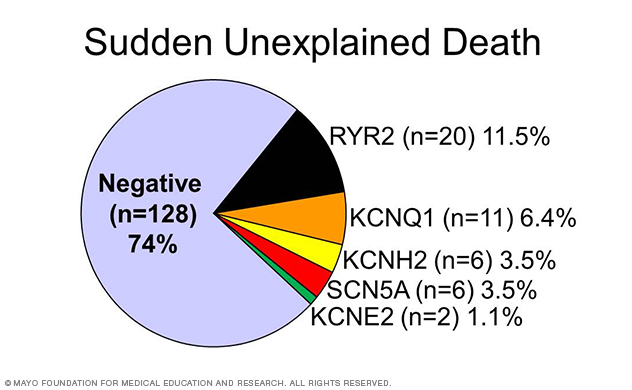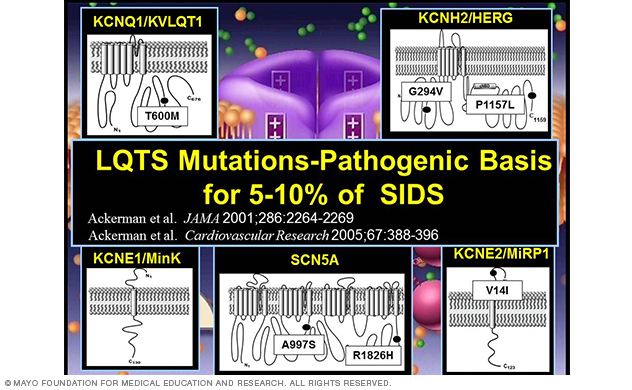Postmortem Genetic Testing
The Sudden Death Genomics Laboratory at Mayo Clinic studies postmortem genetic testing (molecular autopsy) for sudden unexplained death (SUD), unexplained drowning and sudden infant death syndrome (SIDS).
Molecular autopsy in sudden unexplained death and unexplained drowning
Figure 1.

Figure 1. Comprehensive mutational analysis of all 60 translated exons in the LQTS-associated genes in sudden unexplained death.
Lethal and unexpected, long QT syndrome (LQTS) and catecholaminergic polymorphic ventricular tachycardia (CPVT) represent ideal arrhythmogenic assassins able to escape suspicion, detection and apprehension by either a standard medicolegal autopsy or a careful evaluation of surviving first- and second-degree relatives.
Under the guidance of Dr. Ackerman, the Sudden Death Genomics Lab has completed the largest molecular autopsy series of sudden unexplained death to date.
Comprehensive mutational analysis of all 60 translated exons in the LQTS-associated genes (KCNQ1, KCNH2, SCN5A, KCNE1 and KCNE2) — along with targeted analysis of the CPVT1-associated, RyR2-encoded cardiac ryanodine receptor — was conducted in a series of 173 cases of sudden unexplained death referred from a medical examiner. About 25% of the cases of sudden unexplained death hosted a presumably pathogenic cardiac channel mutation (Figure 1).
In this series, sudden death was the sentinel event in all but four cases of mutation-positive sudden unexplained death.
This postmortem genetic testing study provided molecular evidence of an underlying cardiac channelopathy as the likely cause and a fatal ventricular arrhythmia as the presumed manner of death in nearly one-third of the cases of sudden unexplained death.
Postmortem cardiac channel genetic testing should be considered as a standard part of the evaluation of autopsy-negative sudden unexplained death.
Molecular autopsy in sudden infant death syndrome
Figure 2.

Figure 2. Postmortem genetic testing for cardiac channel mutations has been completed for a large population-based cohort of SIDS cases, revealing mutations in 5% to 10% of cases.
Unveiling such cardiac channel mutations hasn't been confined to only molecular autopsy investigations of sudden unexplained death in children, adolescents and adults. It also extends to sudden infant death syndrome.
To date, Dr. Ackerman's Sudden Death Genomics Laboratory has completed postmortem genetic testing for cardiac channel mutations for a large population-based cohort of SIDS cases, revealing mutations in 5% to 10% of cases (Figure 2).